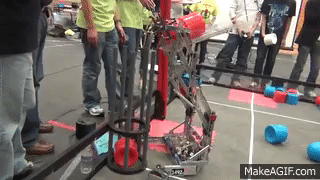The first step you take into Happyland gives you an accurate representation of what it’s
like to live there. The way your foot crushes a layered cake of trash, filth, and mud is how the
people of Happyland live, trampled on by the government, treated like shit being treaded on
underfoot. Commissioned by the Filipino government as “temporary housing”, Happyland has
stood as “temporary” to this day for nearly 30 years. The place smells like a cacophonous sludge
of piss, rot, trash, and sweat, and everywhere the eye looks is trash, trash, and more trash.
Happyland citizens live in makeshift shanties jumbled together out of assorted chunks of
glorified garbage. Plastic bags, soda cans, rotting food, and paper waste line the walls, pave the
roads, and fill the shanties. Those living in Happyland cope with poor (to say the least) living
conditions, but are crippled with poor selfesteem. It’s not hard to see why. What employer
wants a worker who lives in a shithole? Who wants to place their business in the grimy hands of
someone who has nothing to their name? Consequently, the people in Happyland rarely see the
light, that they could have a future, and choose instead believe in the illusion that they can’t
make it out. Physically and mentally, Happyland is an abyss, a vacuum of happiness. Truly, it is
a shame to the human race that such a place should exist.
It’s easy to immediately blame the Filipino government for Happyland, and to some
extent the blame can and should be put on the government. But I’m not here to attempt
whistleblow or antagonize the Filipino government, though much can be improved. Nor am I
here to call for monetary donations or some celebrity philanthropy to go towards Happyland
citizens. Because let’s face it, the government won’t be in any shape to solve Happyland
problems any time soon, and even if millions of people did donate millions of dollars to the
Happyland cause, funds would likely be illmanaged, and in any situation, just pure money can’t
change lives. We can’t give every slum dweller a new home, or erect brandnew living
complexes to accommodate for every poor person. That’s wishful thinking, and ludicrous to say
the least.
But we can convince the poor people that there is a future for them out there, there is
light at the end of the tunnel. And if they only worked for it, and believed they could make it out,
they really could. And that’s why a small robotics program can help more slum kids to a greater
extent than large monetary donations or charities and their futile efforts. While charities and
money may be able to solve shortterm, smalltarget issues, robotics provides a longterm
solution that elicits a beneficial mindset, rather than a small physical effort. Robotics teams can
show the kids, the next generation, that there is a whole world out there. Robotics teams can
show the kids that there is a better world that they could live in, and that they don’t have to stay
where they are. It can show the kids that they have more to look forward to than being garbage
scavenging parents in a filthy slum.
We can do more than any charity, any amount of money, with a box of plastic parts and a
cheap laptop. Our plastic pieces can forge steel hearts. And steel hearts can make dreams come
It’s not like we’d be spinning straw into gold, we’d be spinning plastic into dreams.

